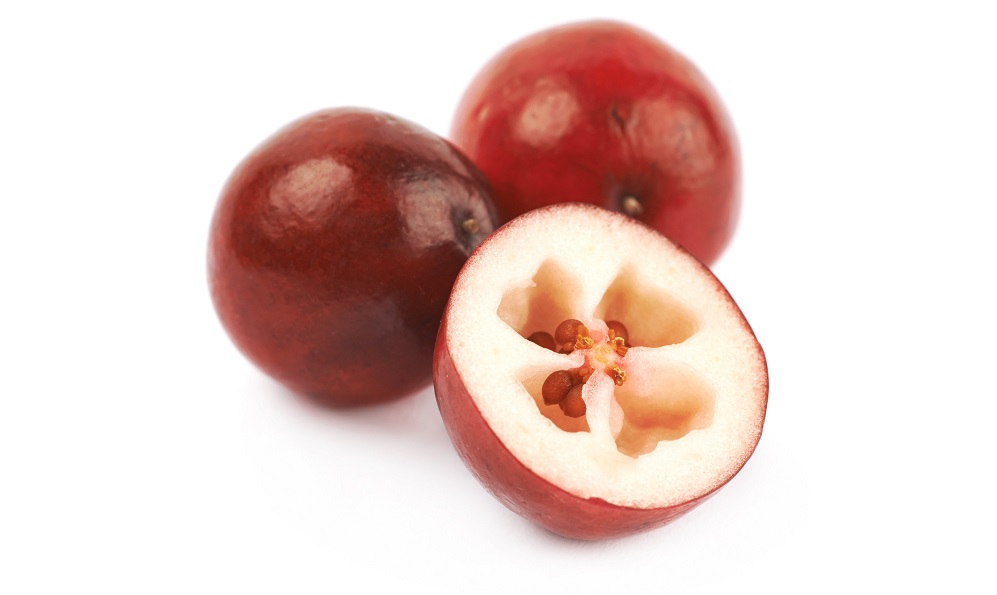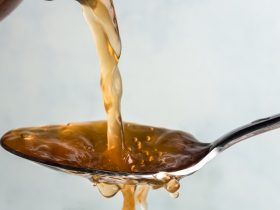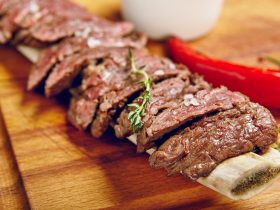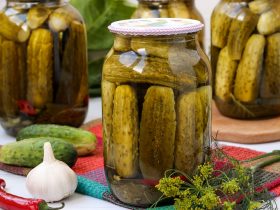Cranberries are a sour berry fruit that present a crimson color and often-times wrinkled skin. At approximately the size of a raisin, the vast majority of harvested cranberries are crushed in order to make juice or jelly.
As cranberries are small in size, it is often difficult to process all of them without the aid of mechanical equipment, and as such may contain seeds and other internal impurities not normally found in other processed fruits1.
Yes, cranberries have seeds. These seeds are entirely edible and do not require removal unless one desires to use them for other purposes such as soaps or bird feed. These seeds are usually mechanically strained out using various types of machines in a cranberry processing plant so as to create a juice or jelly with smoother texture.
Why do Cranberries Have Seeds?
Like all other forms of organic life, plants produce seeds in multitudes in order to ensure the continued existence of their species. The exact vector of this depends on the type of life-form and its particular genetic programming, however.
In the case of fruit-bearing plants, fruit may act as both a transport device for the seeds as well as a nourishing source of food as it begins to decay around the seed, providing essential vitamins and attracting beneficial microorganisms into the soil around the seed.

In particular, cranberry shrubs grow quite well in irrigated or otherwise moist soil, which not only facilitates the continued development of seed-bearing fruits but also attracts animal life that help propagate the seeds as they are swallowed and subsequently excreted elsewhere.
Apart from shrubs that are grown in moist soil, cranberries may also grow into vines that bear much the same type of fruit and seeds3.
Do you Need to Remove Seeds from Cranberries?
As previously mentioned in this article, cranberry seeds are in no way harmful to humans, and as such do not require removal from the fruit itself. However, if you have purchased cranberries in wholesale or otherwise in large batches and wish to use them for purposes other than directly snacking, it is advisable to remove the seeds from the cranberries through mechanical means.
Depending on your particular purpose for the cranberries, you may pour the mashed or liquified fruit through a fine-mesh strainer in order to catch the seeds as the fluid pours through it.
Alternatively, it is entirely possible to use the seeds in jam or jelly to not only add a significant number of vitamins and fiber but to also give your dessert a crunchy texture.
Are Cranberry Seeds Healthy?
Like most seeds, cranberry seeds contain a significant amount of fiber, a form of carbohydrate that is mostly indigestible by the human gut but is otherwise extremely healthy for its function.
Apart from fiber, cranberry seeds contain certain compounds that help combat or reverse the effects of oxidation on your cells, essentially reducing the damage oxygen does to our cellular organelles over time.
Apart from this, the particular phenolic compounds present in cranberry plants- and by extension their fruit- are known to be hepatoprotective in nature, both aiding and supporting the function of the digestive system with a particular focus in its filtration organs2.
In short, this means that cranberries and their seeds can be beneficial to the health of your liver, and, in some ways, the rest of your digestive tract.
Can You Eat Cranberry Seeds?
Yes, cranberry seeds can be eaten both in their ordinary form and ground up if so desired. Often, cranberry seeds are ground up in order to harvest any fluid present within them, of which contain quite a few vitamins as well as certain lipid-based compounds that are arguably beneficial for human health.
If you wish to cook your cranberry seeds, simply stew in an appropriate amount of sugar-water in order to leach out some of its acidic taste as well as to soften their outer shells.
Cranberry seeds may also be added to shakes or other dishes that utilize a blender or food processor, allowing you to add a sharp and slightly sour taste to the recipe if needed.
What are Cranberry Seeds Used For?
Cranberry seeds provide a wide plethora of uses to many different industries, from simple skin exfoliation because of their small size to a vitamin-rich oil used to aid the human body’s functions at a cellular level.
Most commonly, left-over cranberry seeds from juice and jelly manufacturing plants are sold to cosmetic companies to incorporate into their products. Specialty soap-bars and facial scrubs use these seeds in order to provide gentle friction against the skin, referred to as “exfoliating agents”.
If not sold to cosmetic companies, health product companies also purchase these same seeds in order to press them with flash-frozen metal or stone in a process aptly dubbed cold-pressing.
This method extracts the maximum amount of phenolic and other lipid-based compounds from the seeds, of which are collected and purified before bottling.
This cranberry seed oil, also known as cranberry essential oil, is known to be rich in compounds that resist the oxidative damage human cells undergo as time passes.
This oil is also combined with alcohol or other chemicals that allow it to aerosolize easily for the purposes of perfuming a room or even for aromatherapy.
Can Cranberry Seeds be Planted?
Since the primary function of plant seeds is for it to act as an “egg” from where another plant of the same species will sprout, cranberry seeds are perfectly capable of being planted.
However, this depends on several factors that must be accounted for if one wishes to plant their cranberry seeds.
The first of which is if the seeds have undergone damage or otherwise experienced an environment that may inhibit their ability to germinate. High heat, mechanical pressure or microbial growth will essentially kill the seed, preventing it from growing.
The second factor to watch out for is whether the climate you are planting these seeds in is appropriate for their growth. Cranberries grow best in seasonally irrigated soil at milder temperatures, and as such their growth will be stunted if they are planted outside of these parameters, if not prevent them from sprouting entirely.
Cranberry plants can take up to five years to grow, depending on the conditions and care provided for them. It is advisable to keep this time frame in mind when planting your cranberry seeds.
References
1. Carol Cloud Bailey (19 November 2009). “Garden Tips: Give thanks for cranberries, grown with a taste of Florida”. TCPalm.com. Scripps Interactive Newspapers Group
2. Safaa A. Faheem, Noha M. Saeed, et al. (March 2020) “Hepatoprotective Effect of Cranberry Nutraceutical Extract in Non-alcoholic Fatty Liver Model in Rats: Impact on Insulin Resistance and Nrf-2 Expression” Egyptian Russian University, Cairo, Egypt
3. Unknown Author. (N.D.) “Cranberry cultivation”. US Cranberries. 2018





Hi, I'm Dom
Dom Eats was started to help other people fall in love with food. While cooking can feel intimidating, it doesn't have to be.